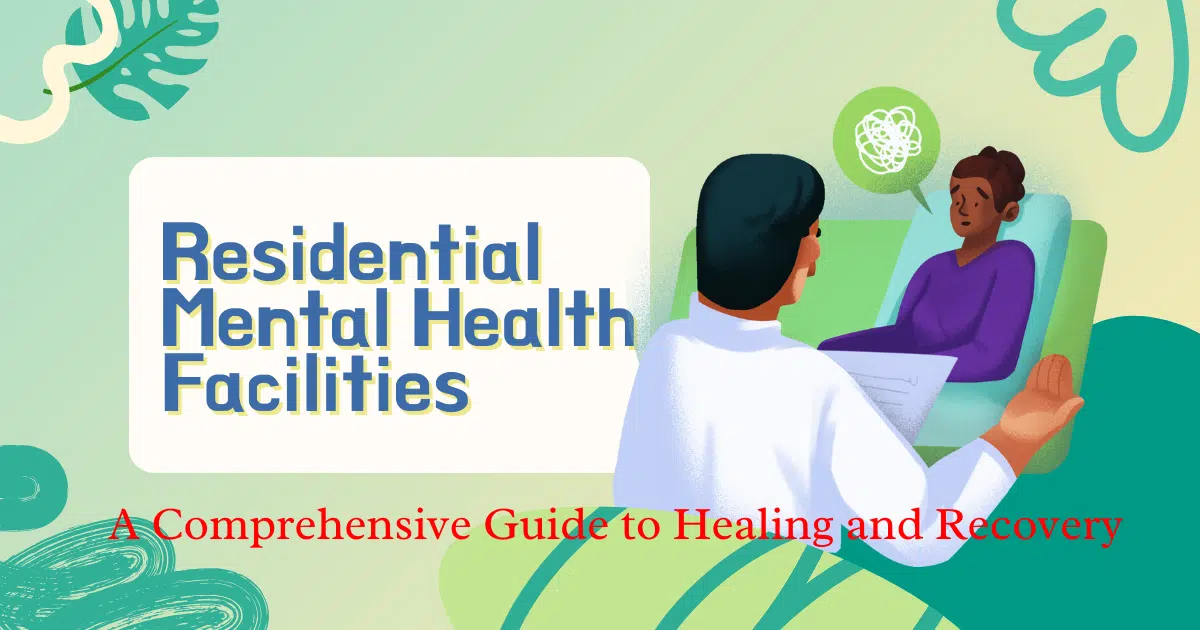Mental health is an essential component of overall well-being, yet millions struggle silently with mental health disorders. When outpatient therapy and medications aren’t enough, residential mental health facilities offer a beacon of hope. This comprehensive guide delves into what these facilities offer, how they operate, and how they can be the turning point in one’s journey toward recovery.
Table of Contents
Understanding Residential Mental Health Facilities
Residential mental health facilities are live-in healthcare centers providing intensive treatment for various mental health conditions. Unlike outpatient services, these facilities offer round-the-clock care in a structured environment, allowing individuals to focus solely on their recovery without external distractions.
Conditions Treated
- Depression and Anxiety Disorders
- Bipolar Disorder
- Schizophrenia
- Eating Disorders
- Substance Abuse and Dual Diagnosis
Source: National Institute of Mental Health
Benefits of Residential Treatment
- 24/7 Professional Support: Access to mental health professionals at all times ensures immediate intervention when needed.
- Structured Environment: Daily schedules promote stability and routine, crucial for mental health recovery.
- Peer Support: Living among others facing similar challenges fosters a sense of community and understanding.
- Holistic Therapies: Many facilities offer alternative treatments like art therapy, meditation, and exercise programs.
How to Choose the Right Facility
Selecting the right residential mental health facility can be overwhelming. Here are essential factors to consider:
Accreditation and Licensing
Ensure the facility is accredited by recognized organizations like The Joint Commission or CARF International. Accreditation signifies adherence to high standards of care.
Treatment Approaches
- Evidence-Based Therapies: Cognitive Behavioral Therapy (CBT), Dialectical Behavior Therapy (DBT), etc.
- Holistic Treatments: Yoga, mindfulness, nutritional counseling.
- Customized Treatment Plans: Tailored to individual needs.
Staff Qualifications
- Licensed Therapists and Psychiatrists
- Experienced Support Staff
- Low Staff-to-Patient Ratio
Aftercare Planning
A good facility provides a robust aftercare plan to ensure long-term success post-discharge.
Frequently Asked Questions
What is the average length of stay?
Stays can range from 30 days to several months, depending on the individual’s needs and progress.
Does insurance cover residential treatment?
Many insurance plans cover at least part of the cost. It’s crucial to verify with your provider and the facility’s admissions team.
Can family visit during the treatment?
Most facilities encourage family involvement as it’s vital for the recovery process. Visitation policies vary, so check with the specific center.
Tips for a Successful Treatment Experience
- Be Open and Honest: Transparency with your care team enhances the effectiveness of your treatment.
- Engage Fully: Participate actively in all therapies and activities.
- Build a Support Network: Connect with peers and maintain communication with loved ones.
- Focus on Self-Care: Utilize downtime for reflection, rest, and personal growth.
Real-Life Success Stories
John’s Journey to Recovery
After battling severe depression for years, John checked into a residential mental health facility. Through intensive therapy and support, he developed coping strategies and rekindled his passion for art. Today, John advocates for mental health awareness in his community.
Source: Mental Health America
The Role of Family and Friends
Support from loved ones can significantly impact recovery outcomes. Families are often included in therapy sessions to repair relationships and establish a supportive home environment post-treatment.
The Importance of Continuing Care
Recovery doesn’t end upon leaving the facility. Continuing care, such as outpatient therapy, support groups, and regular check-ins, is crucial for maintaining progress.
Conclusion
Residential mental health facilities offer a lifeline for those needing intensive, immersive treatment. By providing a supportive environment, professional care, and comprehensive therapies, these facilities empower individuals to reclaim their lives.
If you or a loved one are struggling with mental health challenges, consider exploring the option of a residential facility. It could be the first step toward a brighter, healthier future.
References:
